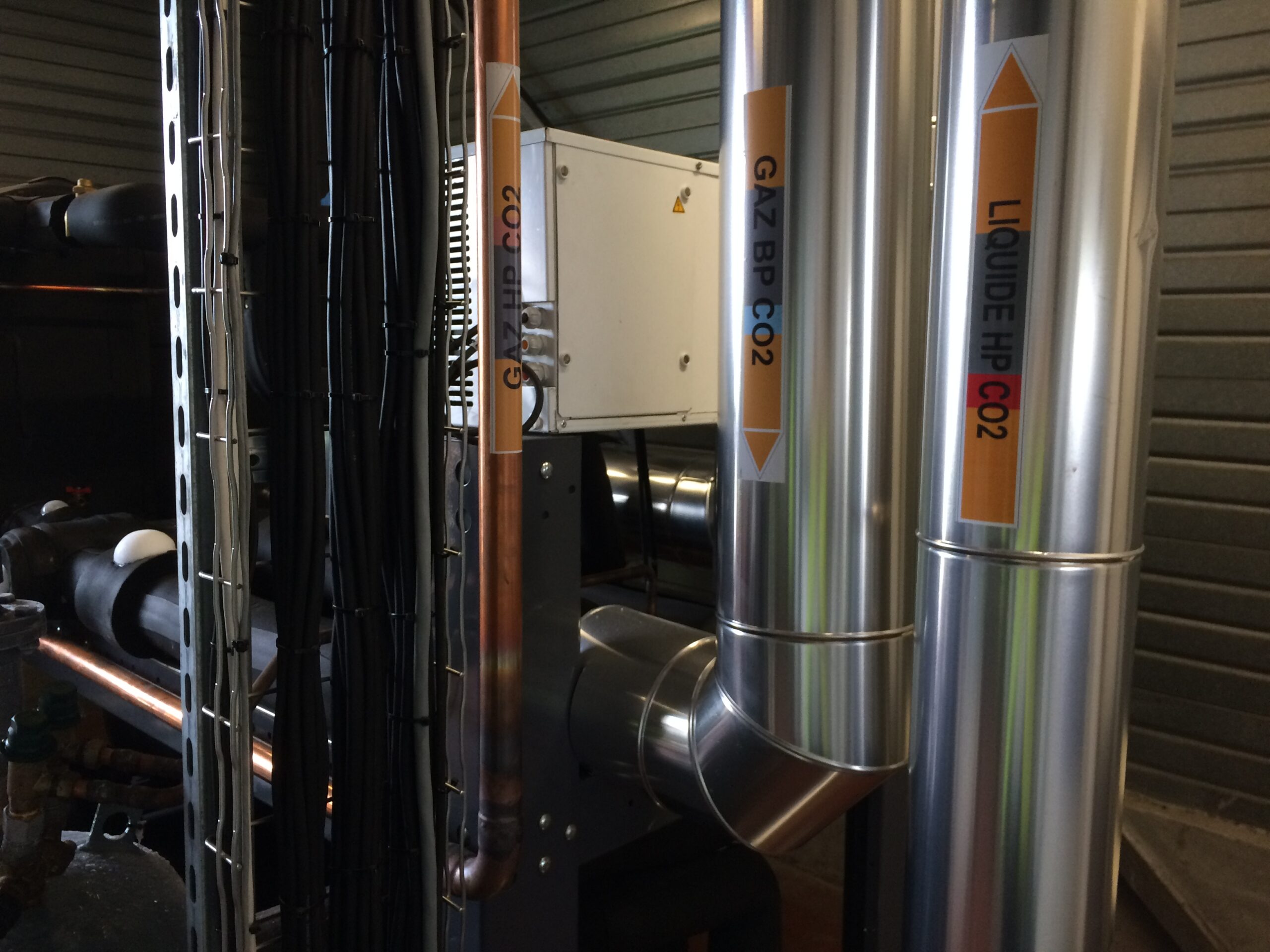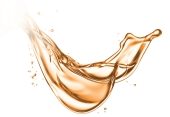F-Gas II aims to gradually reduce the use of HFCs and fluids with a high global warming potential (GWP). These changes in legislation encourage the use of ammonia (NH3) and carbon dioxide (CO2).
Systems using refrigerants must comply with numerous technical and safety restrictions. That is why regular maintenance with the use of a suitable oil is crucial for the installation’s longevity and energy performance.
What are the main roles of oil in a cooling system ?
Oil has three main functions :
- lubricating moving mechanical parts,
- sealing,
- motor fluid for some regulation devices and cooling fluid for screw compressors (for example).
What are its essential properties ?
- Lubricating power: linked to the thickness of the oil film.
- Solubility in the refrigerant in its gaseous state.
- The ability to mix with the refrigerant in its liquid state.
- Viscosity: ability to withstand temperature variations.
In spite of oil separation systems, oil is distributed throughout the system and will have a tendency to accumulate in components where circulation speed is low. It will be deposited on the walls of heat exchangers (in particular evaporators) and will reduce their efficiency. If the oil does not return correctly to the compressor, the oil pump will be able to prime itself and cause the machine to stop.
The oil will therefore be selected according to the refrigerant, its miscibility and solubility in the refrigerant, operating temperatures and the compressor type and technology.
Choosing oil for use with ammonia
Compressors that run on NH3 require a top quality oil that meets the following criteria :
Ammonia heats up a lot on compression. The oil must therefore have characteristics that are compatible with the particular features of ammonia :
- High strength of the lubricating film for sealing between the male and female rotors of screw compressors
- Elimination of heat (cooling role)
- Reduced friction and wear on compressors, while maintaining an adequate viscosity at low temperature (remaining fluid) but also at the discharge temperature
- Protection against corrosion
- Compatible with seals
- Ability of the oil to withstand high temperatures, so as to avoid deposits at high temperature.
There is no mixing between the oil used and ammonia; the oil drawn through the circuit must therefore be reintegrated. The oil is heavier than ammonia and is deposited in the bottom of cavities. Although, in the past, NH3 purging systems were used that discharged into the atmosphere, today the purge is carried out using a sealed system purge bottle. Since the oil does not mix with the ammonia, which has a low vapour pressure, its migration into the circuit will be inevitable. It is therefore necessary to use an oil separator.
Ammonia is commonly used with paraffin and naphtha-based mineral oils, PAO and AB synthetics. An ISO 68 grade is usually used in industrial applications because of its almost zero drop in viscosity.
Since ammonia is considered to be toxic and slightly flammable, and in view of its operating conditions, the oil used should allow the system to be lubricated and cool the system, on the one hand, but also to seal it.
For food industry applications, the use of an oil, registered H1 or H2 by the NSF, may be required by the operator.
In addition to the operating constraints of ammonia, other constraints associated with wear on the system can appear during the life of the installation, e.g. pollution and deterioration of the oil, poor oil return, wear on parts, the formation of deposits, wear on seals, etc.
Climalife offers efficient oils and follow-up analysis services that will allow you to monitor wear in your systems, space out oil change intervals, check the condition of the oil and to maintain the longevity of your installation.
Find out about our range of oils for NH3 by clicking here

Ask your Climalife sales representative for advice.
Choosing oil for use with CO2
 CO2 has much higher service pressures and temperatures than medium pressure halogenated refrigerants and that results in extreme mechanical stress on moving parts and bearings.
CO2 has much higher service pressures and temperatures than medium pressure halogenated refrigerants and that results in extreme mechanical stress on moving parts and bearings.
It also has the particular feature of being extremely soluble in oil, which causes significant drops in viscosity and may cause the oil film to break down. The CO2 must be of refrigerant quality with a water content of less than 5 ppm, in order to avoid the acidification of the oil upon contact.
Consequently, if an unsuitable oil is used, there can be premature wear on the system due to insufficient lubrication and a sealing fault with a lack of compression.
Where the refrigeration unit is designed to operate with miscible lubricants, where CO2, is used, mineral or synthetic PAO and AB lubricants are not suitable.
Additive-based POE or PAG molecules will be more suitable for R-744 and may be suitable in subcritical and transcritical applications
POE oils :

The particular features of POE oils have a tendency to allow a high degree of solubility with CO2 and contribute significantly to a reduced viscosity.
The higher the pressure, the higher the quantity of gas in the lubricant. This behaviour is typical for all lubricant pairs miscible with gas but the extent varies according to the refrigerant and the type of lubricant.
In the case of POEs, reducing the viscosity with CO2 to typical refrigeration system working pressures can lead to a lack of lubrication in some parts of the compressor, mainly at start-up or under high load conditions.
Where an ISO 68 grade is suitable for most halogenated refrigerants, the use of POE oils with CO2 will require a higher ISO grade which will allow the significant drop in viscosity, seen in oil in contact with R-744, to be mitigated. An ISO grade higher than 80 will therefore be more appropriate and the lubricant will therefore be able to retain a viscosity sufficient to protect the compressor’s parts.
Since POE oils are miscible with CO2, the lubrication system will be simple to implement. Only the water content must be controlled and the system must be clean and perfectly sealed from the moment it is commissioned.
POE oils formulated to operate with CO2 will also contain special additives to reduce the foaming phenomenon observed when the compressor starts up.
It is recommended that the oil’s acidity is checked regularly, using in situ tests such as Acitest Unipro, compatible with all types of oil and that an analysis is conducted once a year (DPH A).
PAG oils :
Where PAG (polyalkylene glycol) oils are used, the reduced viscosity is not as pronounced as with POE oils. This allows the use of an ISO VG 68 grade lubricant which, with R-744 under standard working conditions, has sufficient viscosity to protect the compressor.
The miscibility of PAG oils with R-744 is sufficient to guarantee an adequate oil return, in spite of overheating by a few degrees and the exit from the evaporator.
However, due to there being two phases in the evaporator, the equipment will require adequate sizing of the pipes.
PAG oils formulated for CO2 have excellent thermal stability and can operate under the tough discharge conditions encountered in transcritical heat pumps.
Compared to POE oils, the miscibility zone with PAG is lower. At concentrations greater than 50% oil, you can see the phase separation and the formation of two layers, one containing a lot of oil and the other containing a lot of refrigerant.
See our range of PAG oils for R-744
Note that POE and PAG oils are very hygroscopic and that a can, once opened, should be used immediately and not stored; any remaining oil should be disposed of via the approved reprocessing network.

Making the right choice of oil is essential for the performance and longevity of a refrigeration system. Regular acidity analysis and annual oil condition checks are recommended to ensure the longevity of the installation.
Your Climalife representative will assist you with selecting the right lubricant.

